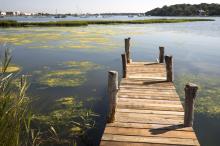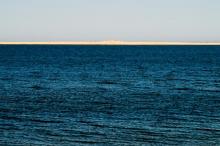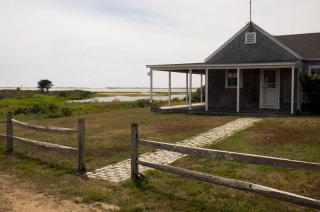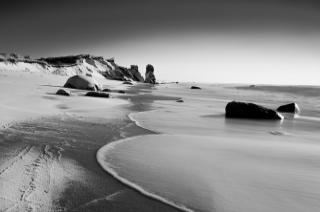
Coastal ponds
2015
All the saltwater ponds on the Vineyard are impaired to some degree, and each one faces a unique set of conditions. Public interest has reached a tipping point.
Sengekontacket Pond has been closed to shellfishing because of rainfall received earlier this week.
The town of Oak Bluffs has advised that the pond will be closed until at least Monday, August 17.
The state mandates pond closures after heavy rainfall because of run-off from waterfowl and other sources. Red flags fly at both bridges on the pond when it is closed to shellfishing.
The draw began with duck hunting in the early 1900s. Tisbury Great Pond was a haven for waterfowl, and wealthy Boston gentlemen took notice.
While the Vineyard is perhaps best known for the ocean, Vineyarders have deep ties to the ponds that were carved into the Island landscape some 20,000 years ago.
Island ponds are a connection to cultural heritage and a livelihood for fishermen. But housing booms and land-use changes threaten to undo a delicate balance.
Martha’s Vineyard is a bellwether of climate change, sea level rise and socioeconomic dynamics. It also is a place with both the interest in and commitment to dealing with its effects.








